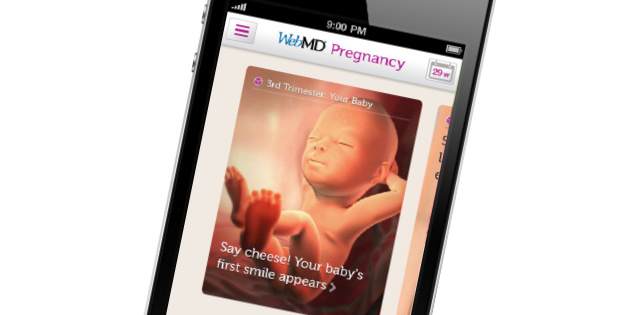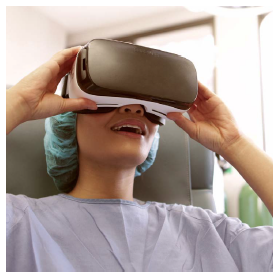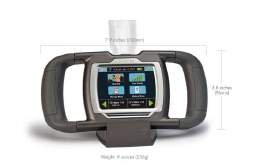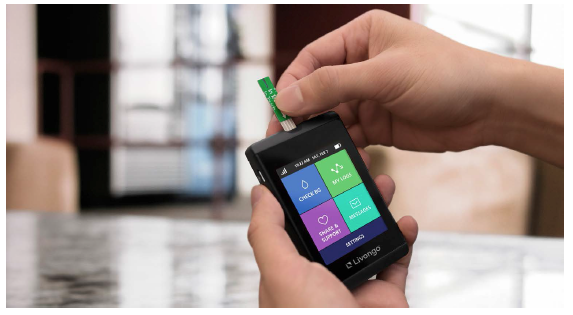Pregnant Women, an Understudied Population, Get Insights App
Trend Watch: ResearchKit, VR, and other tech innovations are improving patient monitoring.
 WebMD and Scripps Translational Science Institute have launched a study to understand factors that contribute to healthy pregnancies, using WebMD’s upgraded iPhone pregnancy app paired with Apple’s ResearchKit to advance research on positive pregnancy outcomes. As with the rest of Apple’s ResearchKit-enabled studies, participants can opt-in to the study and are asked to share information about their medication use, vaccinations they may have received during pregnancy, preexisting conditions, blood pressure and weight change, diagnoses during pregnancy, as well as childbirth location, among other details. Biometric data that is inquired about includes sleep totals and number of steps taken per day.
WebMD and Scripps Translational Science Institute have launched a study to understand factors that contribute to healthy pregnancies, using WebMD’s upgraded iPhone pregnancy app paired with Apple’s ResearchKit to advance research on positive pregnancy outcomes. As with the rest of Apple’s ResearchKit-enabled studies, participants can opt-in to the study and are asked to share information about their medication use, vaccinations they may have received during pregnancy, preexisting conditions, blood pressure and weight change, diagnoses during pregnancy, as well as childbirth location, among other details. Biometric data that is inquired about includes sleep totals and number of steps taken per day.
“Pregnant women are one of the least-studied populations in medical research," says Dr. Eric Topol, director of Scripps Translational Science Institute. “The results of our Healthy Pregnancy Study — on the foundation of an exceptionally popular smartphone app — will ultimately provide expectant mothers, researchers, and healthcare professionals with new medical insights to avoid complications during pregnancy."
Asthma Study Using ResearchKit Demonstrates Power of Mobile Health to Accelerate Clinical Research
In March 2015, scientists launched an Asthma Mobile Health Study at the Icahn School of Medicine at Mount Sinai, using Apple’s ResearchKit to create a mobile application that could yield new insights into people diagnosed with asthma. They recently reported their initial findings in the journal Nature Biotechnology regarding the study that was conducted entirely remotely by smartphone.
The app was downloaded by about 50,000 iPhone users in the first six months. Participants were tasked with completing regular surveys answering questions about their condition and how symptoms affected their daily lives. A total of 7,593 people completed the electronic consent process and enrolled in the trial. An estimated 85% finished at least one survey with one primary group of 2,317 users filling out numerous surveys during the six-month period.
According to a report excerpt, researchers found using remote mobile technology was suitable for studies of short duration that require rapid enrollment across diverse geographical locations, frequent data collection, and real-time feedback to participants and the results demonstrate the power of mobile health tools to scale and accelerate clinical research. Other institutions are using Apple’s ResearchKit to seek similar outcomes for more complex conditions. Stanford University, for instance, developed the MyHeart app to collect information about physical activity and cardiac risk factors to help with the prevention and treatment of heart disease.
Blockchain Startups Develop Protocol for Tracking and Verifying Prescription Drugs
Blockchain startup Chronicled, which links the physical and digital worlds with cryptographic identity chips and blockchain technology, and LinkLab, a life-sciences supply chain consultancy, have launched a serialized track-and-trace pilot for the pharmaceutical industry. The goal of the pilot is to build an electronic, interoperable system to identify and track prescription drugs as they are distributed in the United States. Chronicled and LinkLab will bring a blockchain-supported Drug Supply Chain Security Act protocol and compliance solution to market. This solution aims to provide the industry with a less expensive, less cumbersome, and more secure approach to meeting eregulatory requirements. The project’s goal is to develop around GS1 standards.
E-Skin Enables Shift from Wearables to Skin-worn Devices
According to Frost & Sullivan TechVision Research, electronic-skin is rapidly establishing its immense utility in the healthcare industry for monitoring and medical applications such as measuring and sensing anatomical activities. In a few years, e-skin technology will replace all bulky testing and medical diagnostic devices, power new applications like smart lighting and smart touch displays, allow robots to be deployed in hazardous areas where humans cannot reach, and gather analytical data.
The integration of multiple sensors in the e-skin substrates will also open up opportunities in safety and security applications, consumer electronics and robotics. In electronics, e-skin can replace existing body-worn wearable devices and create a new user-interfacing device for controlling external electronic gadgets. In robotics, e-skin can impart the sense of touch to robots to perform surgical operations without requiring human intervention.
Although e-skin technology creates innovative products, it faces numerous challenges related to integrating sensors into the human body and data processing. Medical regulatory norms, cost pressures, and technology complexity are additional hurdles that it needs to overcome to be considered feasible. In response, manufacturers are employing innovations to resolve the issues of material degradation, lifetime, complex circuitry designing, and skin irritation.
Washable Heartbeat Sensors Create Comfortable Wearables
Researchers released a study, published in the Journal of the Royal Society Interface, unveiling a new fiber optic material that can be produced quickly and then woven, knit, or embroidered into existing fabrics, forming flexible, wearable sensors that seamlessly integrate into clothes. And it’s also machine washable.
Traditional sensors have a tendency to create friction, which is a main cause of irritation. By embroidering the sensor right into the fabric, the friction is minimized.
This particular study is part of a larger project with the goal of developing sensors that can monitor health signs in paraplegic patients, who often run into problems with traditional sensors that can rub against the skin and eventually form sores.
New Hampshire Ortho Clinic uses VR to Reduce Patient Anxiety
 Orthopedic clinic Access Sports in New Hampshire has started to use virtual reality with innovative technology from appliedVR to keep patients calm before, after, and during procedures. At no additional cost, patients can wear the virtual reality gear while waiting for their procedure to begin or while in post-operative recovery. It doesn’t matter if the procedure is surgical or an in-office procedure; patients will have the option of using this technology as a distraction to calm their nerves if the experience brings them anxiety.
Orthopedic clinic Access Sports in New Hampshire has started to use virtual reality with innovative technology from appliedVR to keep patients calm before, after, and during procedures. At no additional cost, patients can wear the virtual reality gear while waiting for their procedure to begin or while in post-operative recovery. It doesn’t matter if the procedure is surgical or an in-office procedure; patients will have the option of using this technology as a distraction to calm their nerves if the experience brings them anxiety.
The virtual reality headset is designed specifically for clinical use. Patients can choose to be transported into more than 20 different experiences through the headset. According to appliedVR case studies, preclinical results showed a 63% reduction in anxiety, and clinical results showed a 24% decrease in pain when patients used virtual reality. Because of these benefits, virtual reality is gaining a reputation as the non-pharmaceutical alternative to calm nerves by reducing — or in some cases, eliminating completely — the need for anti-anxiety medications such as Valium.
With patients being virtually removed from the medical environment, they are able to reduce pain, discomfort, and anxiety during pre and post-operative periods.
Diabetes Management Company to Expand Expand Geographically and Therapeutically
 Technology-enabled diabetes management company Livongo Health raised new funding in March to expand its solutions both geographically and therapeutically. Livongo plans to grow globally, starting with efforts in Singapore, and to investigate other areas of need within chronic disease states, such as high blood pressure and cholesterol. Investors included Microsoft Ventures, American Investment Holdings, and EDBI, the investment arm of Singapore’s Economic Development Board, among others. By investing in Livongo, EDBI addresses a huge healthcare need in Singapore and Asia. An estimated 60% of the world’s diabetics live in Asia, and 12.3% of Singapore’s population has been diagnosed with diabetes, which is more than the average for Asian countries; 440,000 Singaporeans over the age of 18 suffered from the condition in 2014 and this number is estimated to reach 1 million by 2050. Using a mobile data-connected device and an online platform, Livongo helps people with diabetes track and upload their blood glucose levels and receive analytics insights, as well as share their data with family members, caregivers, or doctors.
Technology-enabled diabetes management company Livongo Health raised new funding in March to expand its solutions both geographically and therapeutically. Livongo plans to grow globally, starting with efforts in Singapore, and to investigate other areas of need within chronic disease states, such as high blood pressure and cholesterol. Investors included Microsoft Ventures, American Investment Holdings, and EDBI, the investment arm of Singapore’s Economic Development Board, among others. By investing in Livongo, EDBI addresses a huge healthcare need in Singapore and Asia. An estimated 60% of the world’s diabetics live in Asia, and 12.3% of Singapore’s population has been diagnosed with diabetes, which is more than the average for Asian countries; 440,000 Singaporeans over the age of 18 suffered from the condition in 2014 and this number is estimated to reach 1 million by 2050. Using a mobile data-connected device and an online platform, Livongo helps people with diabetes track and upload their blood glucose levels and receive analytics insights, as well as share their data with family members, caregivers, or doctors.
PMD Launches Updated Spirometer for Remote Monitoring
 PMD’s Spiro PD 2.0 and its HIPAA-compliant Wellness Management System adds the use of telemonitoring technology via WIFI to connect patients, providers, and caregivers. The Spiro PD 2.0 and the management system brings healthcare into the home by monitoring lung function, medication adherence, and tracking patient symptoms in real time. Together, PMD’s comprehensive remote monitoring program and technology driven WMS platform will monitor biometrics, symptoms, medication adherence, and care plan compliance outside of the provider’s office. While monitoring biometrics, adherence and compliance are critical, the WMS platform enhances monitoring through the implementation of validated symptom tools, personalized care plans, and customizable alerts that enable care team members to intervene in real time via a secure HIPAA-compliant portal.
PMD’s Spiro PD 2.0 and its HIPAA-compliant Wellness Management System adds the use of telemonitoring technology via WIFI to connect patients, providers, and caregivers. The Spiro PD 2.0 and the management system brings healthcare into the home by monitoring lung function, medication adherence, and tracking patient symptoms in real time. Together, PMD’s comprehensive remote monitoring program and technology driven WMS platform will monitor biometrics, symptoms, medication adherence, and care plan compliance outside of the provider’s office. While monitoring biometrics, adherence and compliance are critical, the WMS platform enhances monitoring through the implementation of validated symptom tools, personalized care plans, and customizable alerts that enable care team members to intervene in real time via a secure HIPAA-compliant portal.
Patient Engagement Platform Monitors Post-Op Pain And Opioid Use
Halyard Health, a medical technology company focused on eliminating pain, speeding recovery and preventing infection, has launched ON-Q TRAC, an online patient engagement platform developed to help physicians and hospitals provide better post-operative patient care by delivering real-time patient feedback. By implementing ON-Q TRAC, physicians can monitor, measure and track patients’ post-operative satisfaction to improve the overall patient experience.
ON-Q TRAC helps engage patients, enhance connectivity and improve collaboration between patients and physicians. Patients are enrolled in the platform before surgery and are invited to provide information at various time intervals — from pre-operative through 90-days post-surgery — via a user-friendly survey that can be completed on either a desktop or mobile device. Based on this patient input, physicians are able to track patients’ pain levels and satisfaction with their treatment and care. (PV)

















